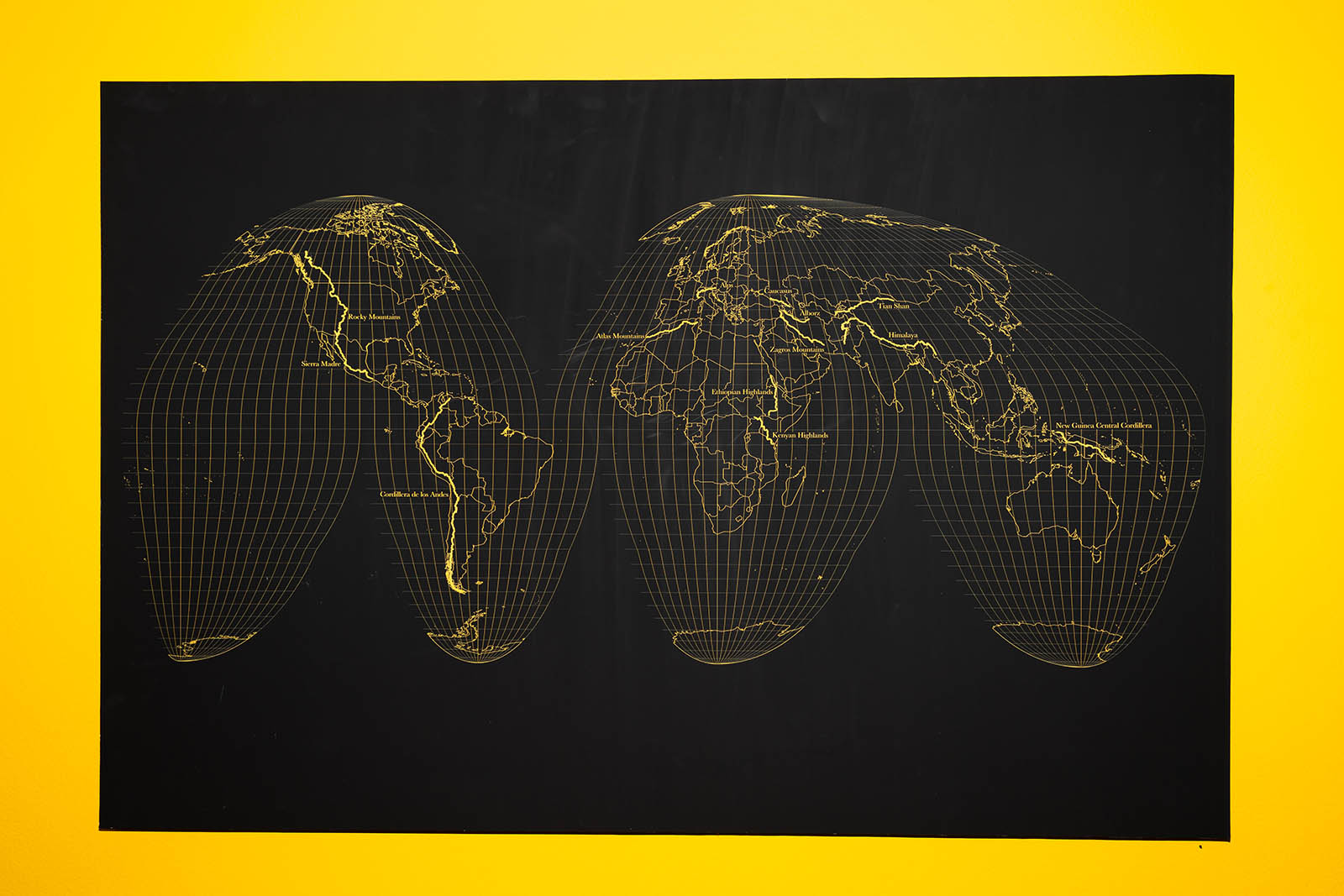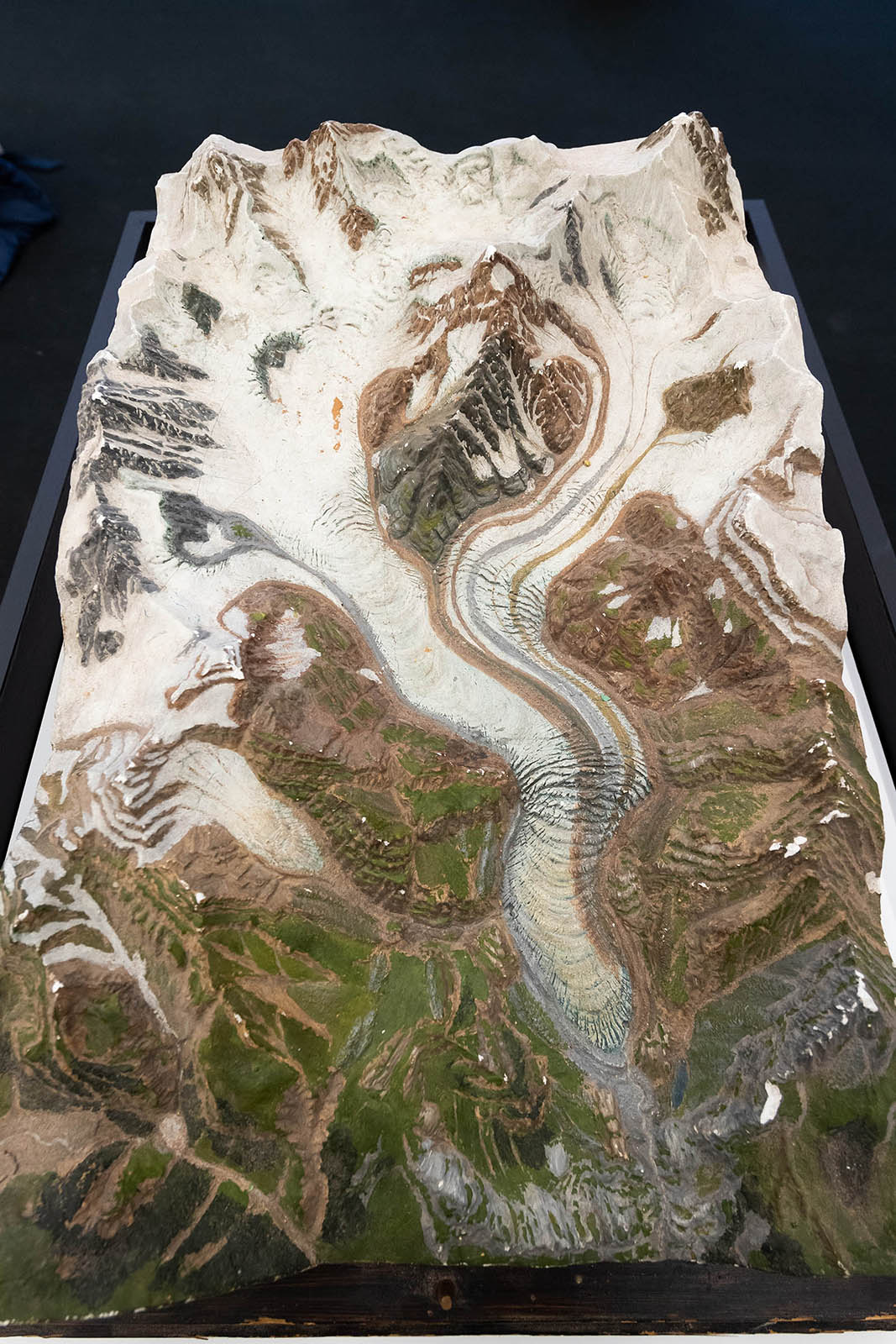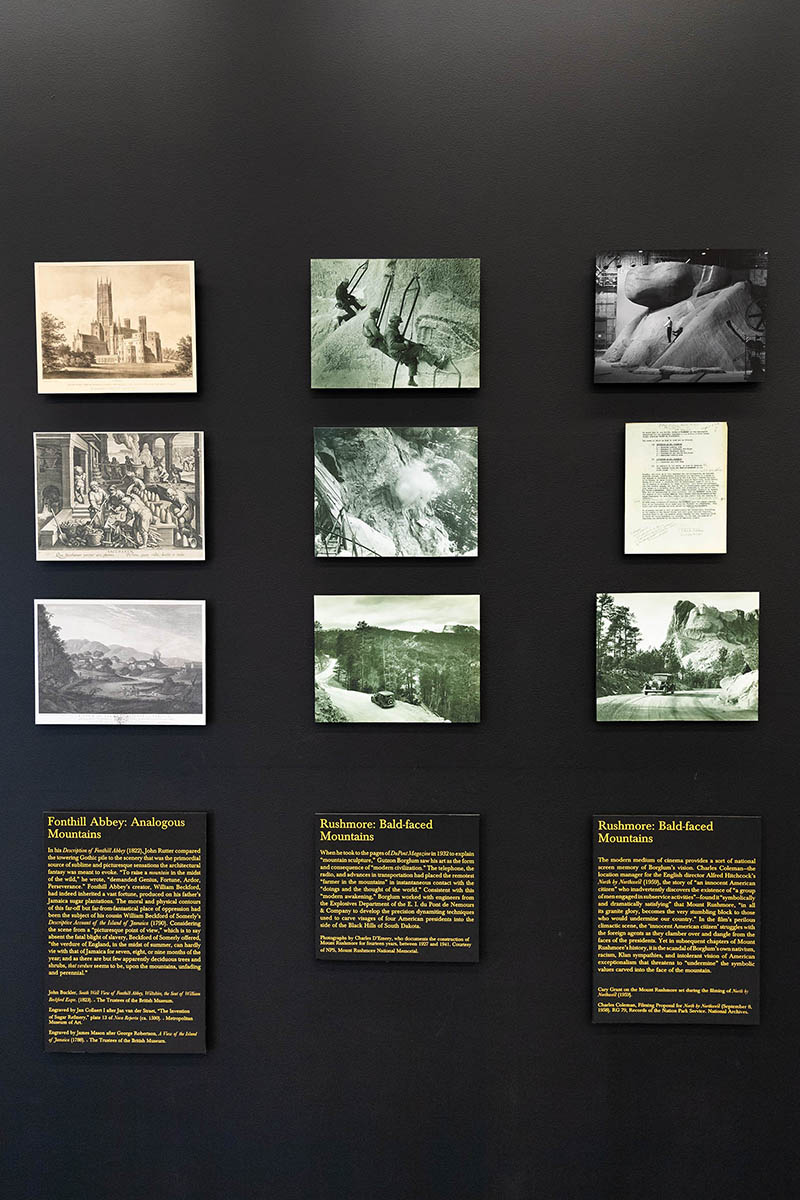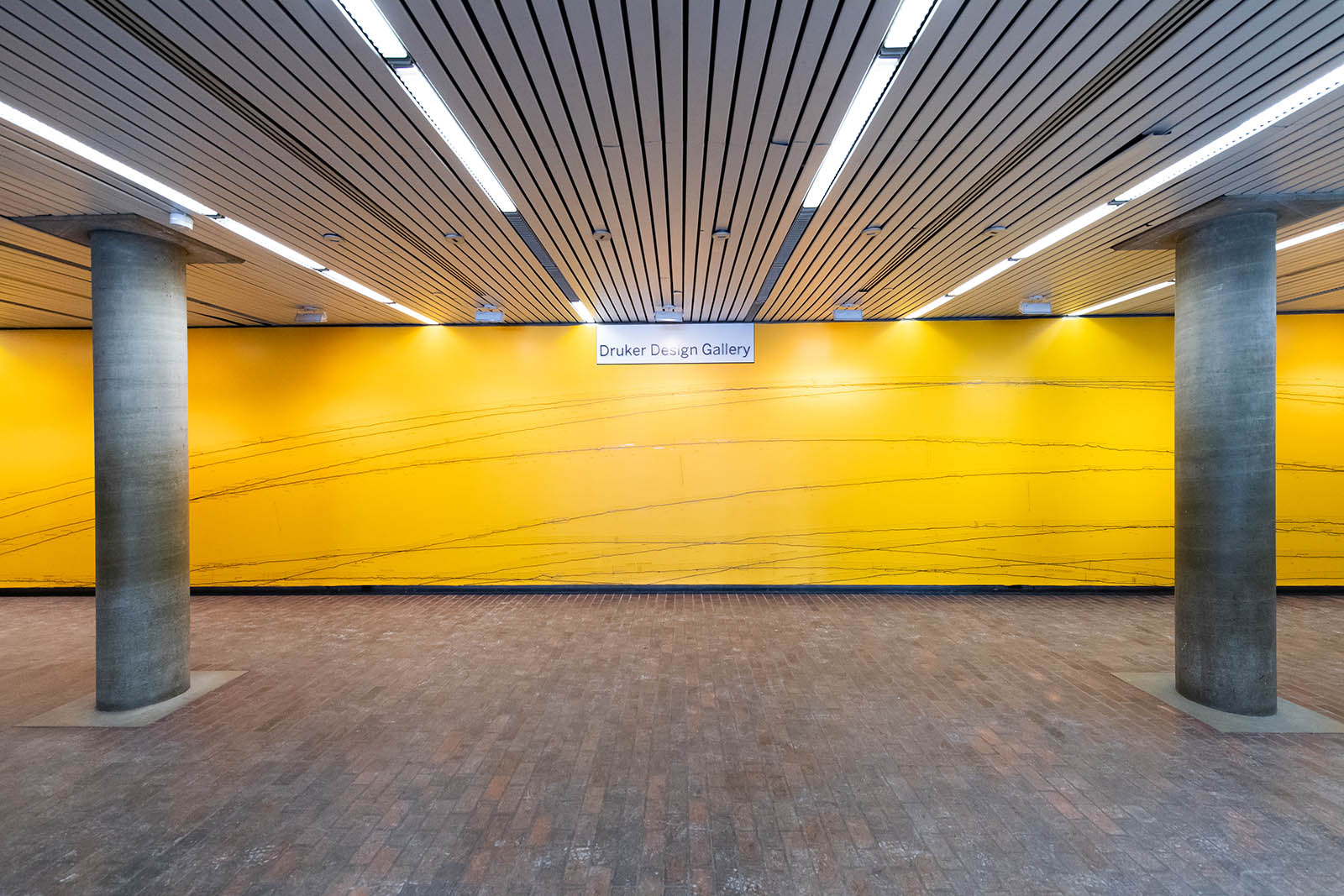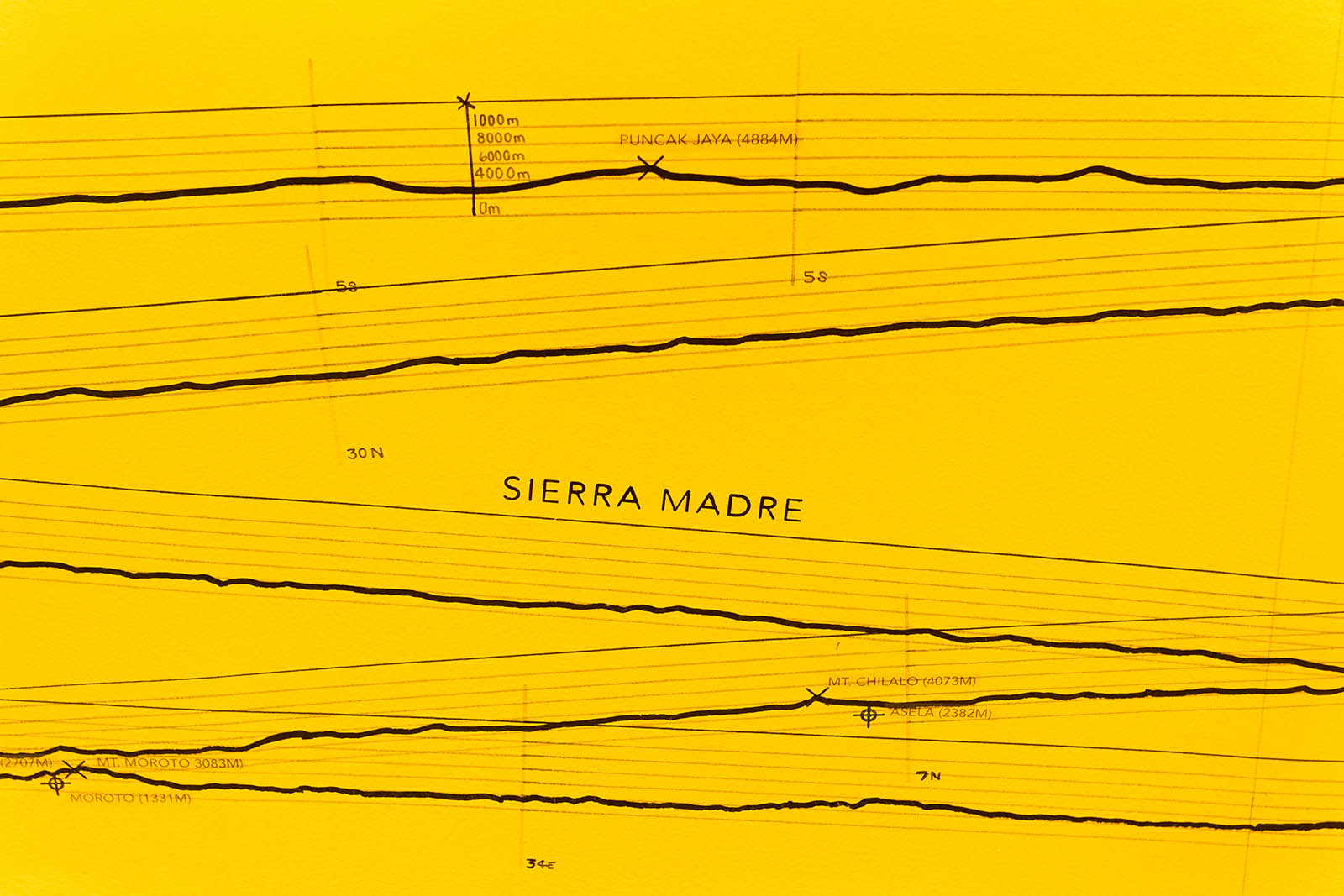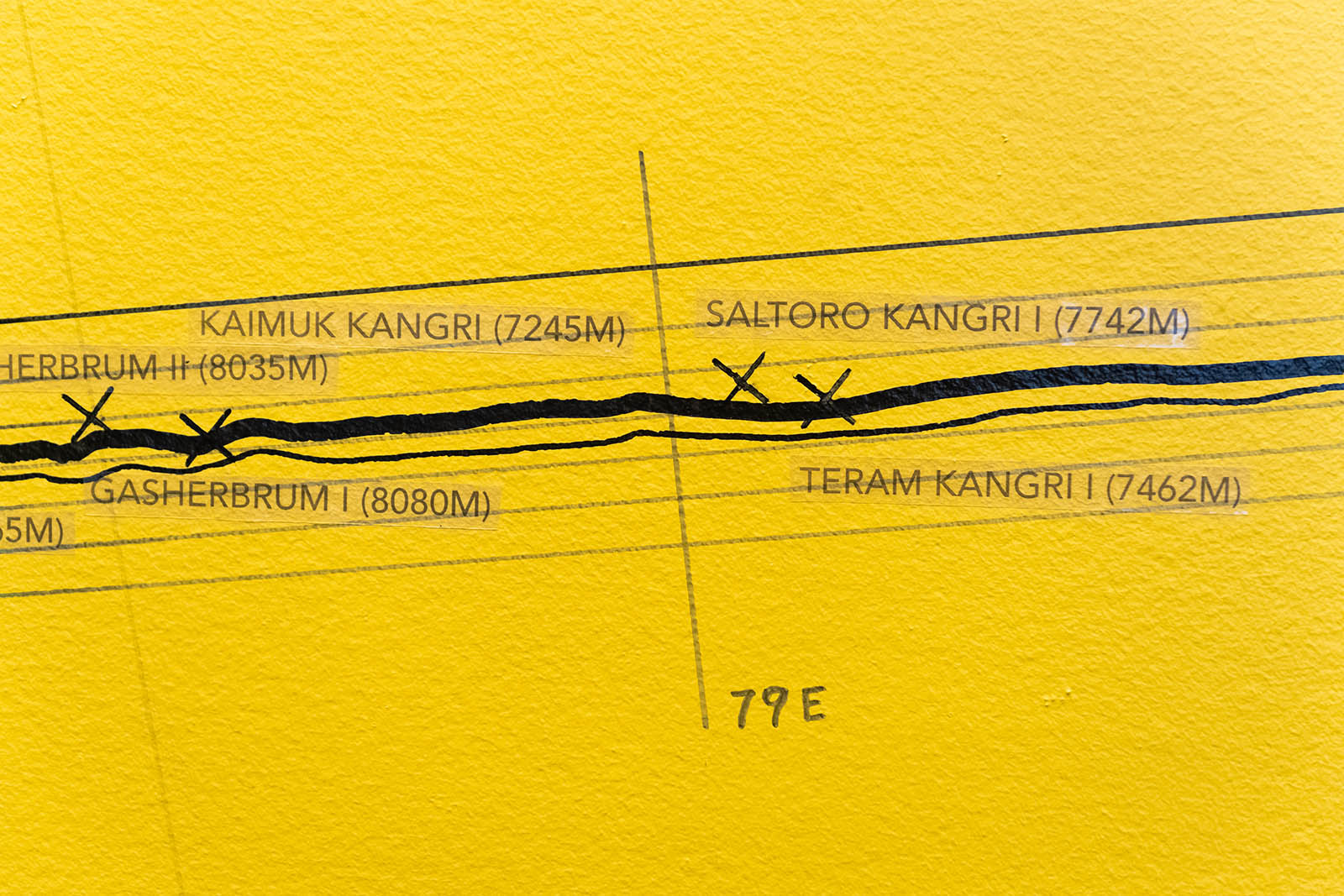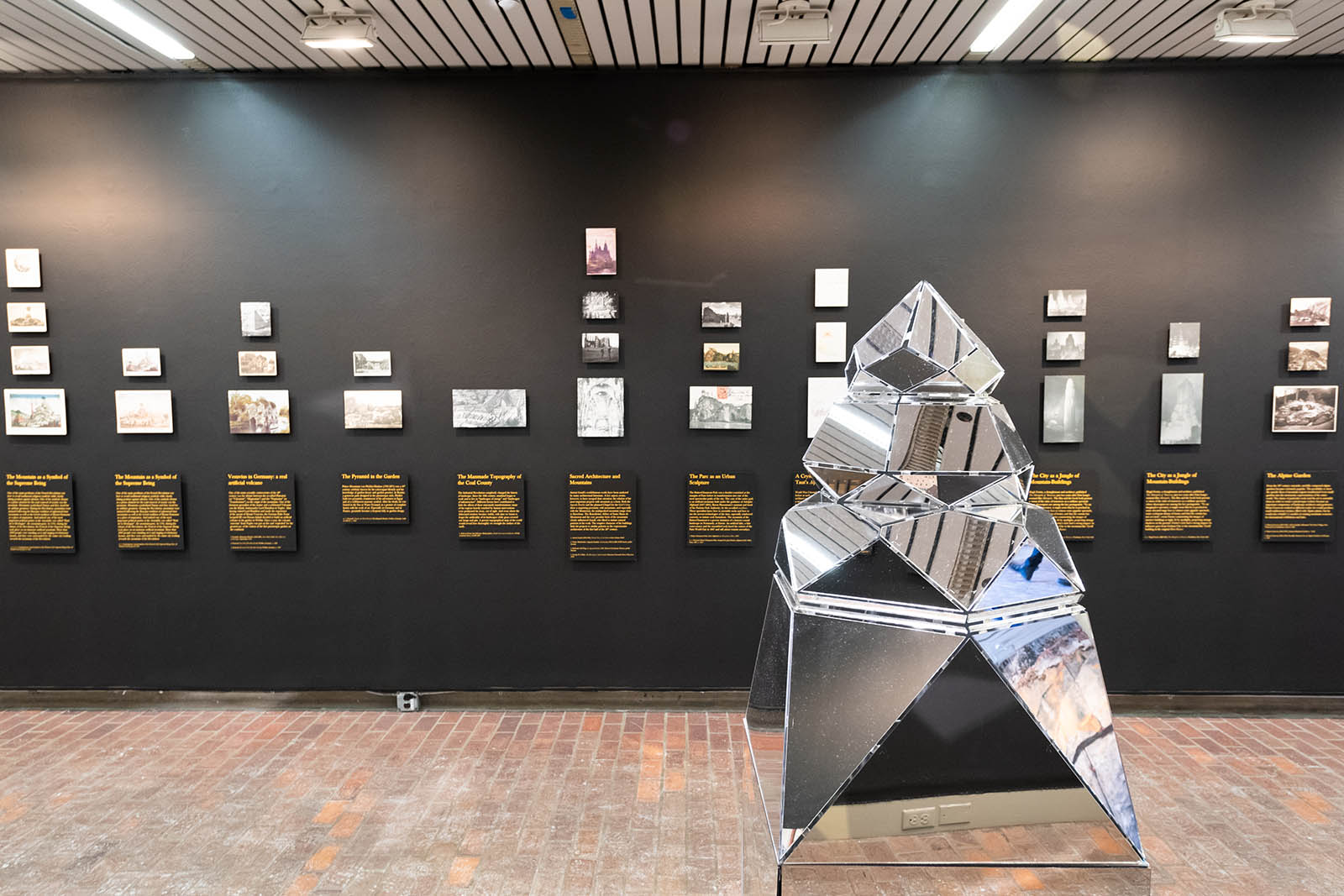The totemic nature of mountains creates a paradox: Their overwhelming size makes them an unavoidable and seemingly understandable part of our image of the earth, and yet this very grandness causes them to resist total visibility and, with that, any notion of comprehension. Mountains’ terrifying splendor, which conjures an attraction not unlike our long-held fascination with the “far side of the moon,” could in turn be credited with the persistent urge to represent them—as painters, writers, and others have done for centuries. But how do you even measure a single mountain, for example? Instead of starting from sea level, why not begin at the earth’s core, closer to the geological forces which created it? What constitutes a mountain range, and what is lost and gained through depicting them as a stenciled line of peaks, as was common in 19th century guidebooks? Such drawings neglect mountains’ complex interior lives—though the tunnels bored through them for roads, military purposes, and mineral excavation raise the question whether many mountains can still be considered natural at all. And the even greater—and constant—violence against nature by humans that defines the Anthropocene, including the destruction of glaciers at an ever-increasing pace, may have made depicting the natural world through any static form of representation too great a lie to accept any longer.
The exhibition Mountains and the Rise of Landscape, curated by Michael Jakob, asks these and a panoply of related questions, not through an impulse to neatly define the object we call a “mountain” but rather to problematize the ways in which these awesome structures have long been incorrectly reduced to a univocal definition. In seven distinct sections, which highlight numerous modes of representation including maps and other models, scientific instruments, drawings, photographs, film, sculpture, and even the soundscape of a melting glacier, the exhibition charts the evolution of mountains in the cultural imagination and, through this, the broader relationship between humans and the environment.
“Historically, and especially in Europe for over one thousand years, mountains had been largely invisible because nature was interpreted as negative—the realm of the devil, the site of the Flood and original sin,” explains Jakob. “Then in the 18th century, scientists, mathematicians, travelers, and artists changed the interpretation. In part through measurement, modeling, and reliefs, mountains were no longer seen as disgusting and disgraceful; they became objects of love and reverence because people discovered what was sold to them as a miracle of the sublime forms of nature.”
Foundational to this sense of sublimity and the philosophical and aesthetic shift it occasioned was the “serpentine line” praised by William Hogarth in The Analysis of Beauty (1753). In this seminal work, the English artist and writer argues that the S-shaped line—an inherent abstraction of a mountain chain’s undulating peaks—“leads the eye in a pleasing manner along the continuity of its variety.”
Co-curator Pablo Pérez-Ramos plays with this concept in the most monumental facet of the exhibition: a 100-foot-long wall featuring a Sol Le Witt–like mural in which the profiles of thirteen mountain ranges generated using various digital mapping tools were drawn by hand at a scale of 1:150,000. “We’re looking at mountains at a scale at which they’re normally not looked at—in relation to the earth as a whole. The panoramas are so long that they’re not able to be horizontal anymore but curved, to represent the curvature of the earth,” says Pérez-Ramos. “The profiles are in a way indexes of the history of those mountains, and this exercise can tell us how different geological forces construct the surface of the earth.”
Humans, too, alter the earth’s skin and in turn elicit changing perspectives on mountains. Consider grandiose feats of engineering such as dams. Like the “false mountains” featured in the exhibition such as pyramids, these sites can diminish mountains in our collective imagination by virtue of their serving as a beacon of human development, especially when built near or even on mountains. “You can read this entire exhibition as related to the Anthropocene, and highlighting these processes highlights the fragility of different perspectives of our sense of mountains,” details Jakob.
Emblematic of this vulnerability of perspective is the work of photographer Yao Lu, whose images appear in co-curator Edward Eigen’s intervention How to Model a Mountain in the Frances Loeb Library, which explores aesthetic, philosophical, and other thematic approaches to mountains throughout history. At first glance, Lu’s photographs appear as classical Chinese landscape paintings, but upon closer investigation, the grand structures reveal themselves as another kind of “false mountain”: piles of trash.
This illusion and subsequent realization illustrates what Eigen considers one of the entire exhibition’s chief virtues. “Mountains are so ‘there’ that even if we have positive or negative associations with them, we think they’re just mountains,” he says. “This exhibit forces people to reconsider what it means to see and experience mountains, to defamiliarize them.”
Words by Charles Shafaieh

